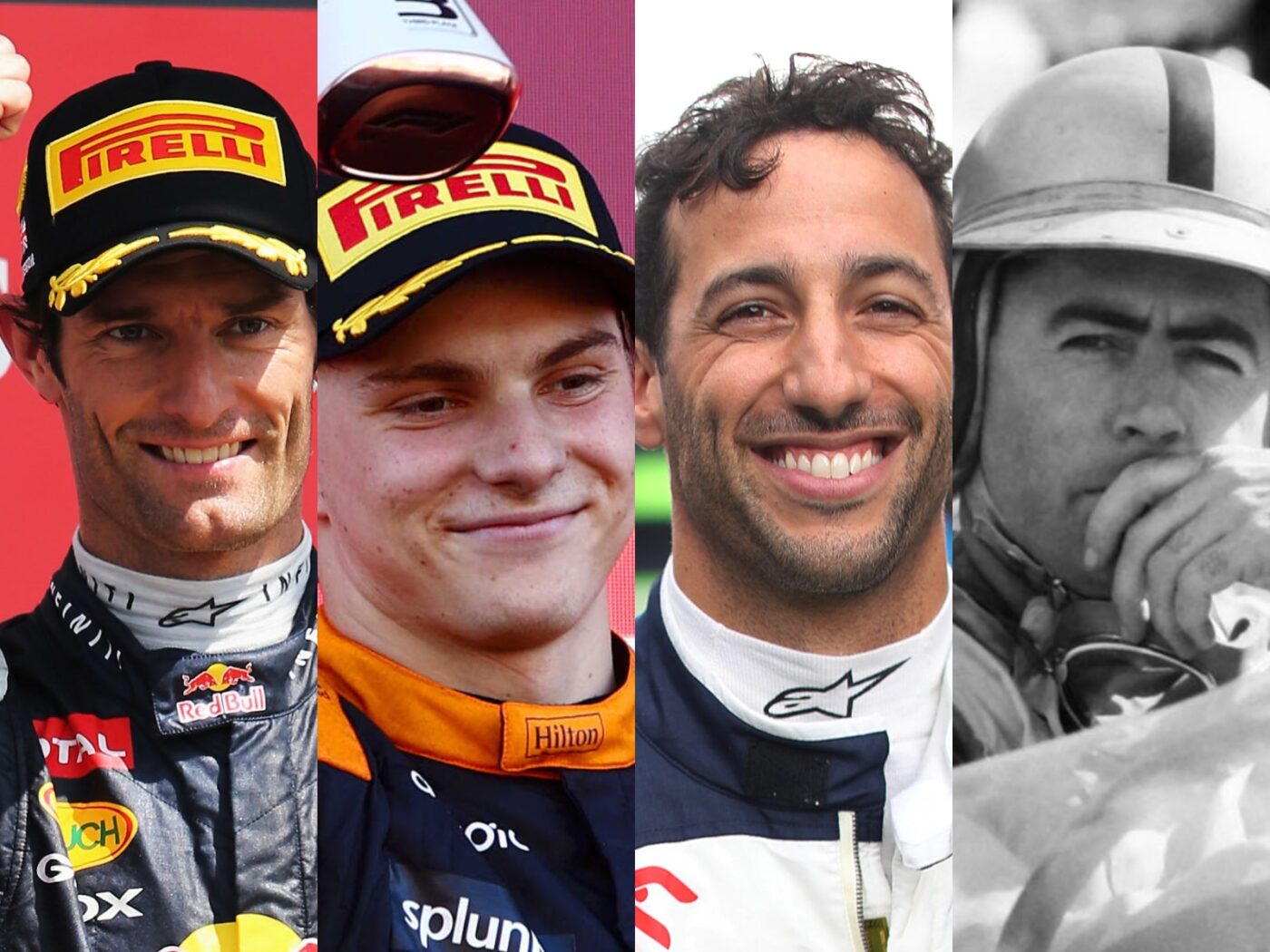In the high-octane world of Formula 1, where the pursuit of speed and excellence knows no bounds, there’s something uniquely exhilarating about seeing the Australian flag raised on the global stage.
From Daniel Ricciardo to Mark Webber, Australia has been well-represented throughout the storied history of F1, and has seen a host of Aussie drivers cruising through the best circuits in the world.
In 2023, Australia has a new sensation to cheer for – Oscar Piastri. Fresh-faced and brimming with talent, this young Sydneysider has set the F1 world alight with his meteoric rise. But he’s not alone in this quest for glory. Join us as we embark on a journey through time, revisiting the legendary exploits of Australian drivers who’ve left tire tracks of triumph and inspiration on the unforgiving asphalt of the Formula 1 World Championship.
In this Australian F1 Drivers article.
Oscar Piastri
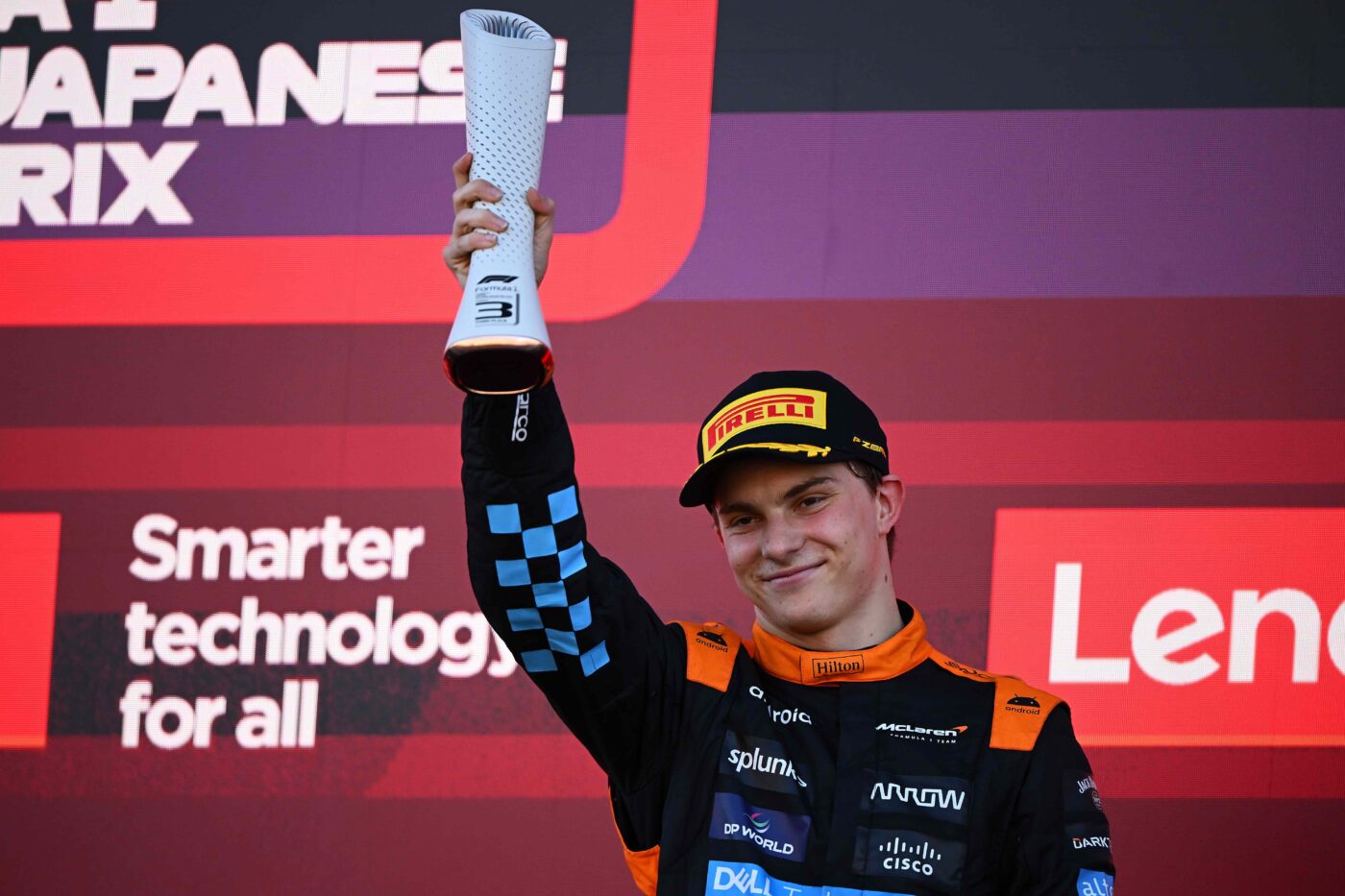
Aged just 21 years old, Oscar Piastri is Australia’s latest F1 star and was the youngest driver on the Formula 1 grid for 2023.
His father Chris is a successful businessman who owns an automotive software development company so it’s no surprise that Oscar got into cars early on. At the age of six, Chris bought Oscar remote-controlled cars as a present from a business trip to America. Not long after that, he began racing them and competed against kids three times his age.
At the age of nine, Piastri graduated from racing toys and began his karting career at the Oakleigh Go-Kart Racing Club, capturing the imagination of the racing world when he placed third in an international competition held at the iconic Le Mans.
In 2016, Piastri competed at the F4 UAE Championship. Despite competing in selected races, the 15-year-old finished 6th with two podium finishes. It was just the start of big things.
Next was a runner-up finish in the British F4 Championship, and then he won the Renault Championship in 2019, the Formula 3 World Championship in 2020, and the Formula 2 Championship in 2021. He is the first driver to win the Renault Championship, F3 Championship, and F2 Championships in consecutive seasons.
Piastri was such a highly-touted prospect that two Formula One teams battled for his services. Following the decision of FIA’s Contract Recognition Board, Piastri ended up making his Formula One debut this year for McLaren. He earned his first F1 points at the 2023 Australian Grand Prix then nabbed his first podium finish at the 2023 Japanese Grand Prix.
RELATED: Oscar Piastri’s New McLaren Contract Proves He’s The Real Deal
Daniel Ricciardo
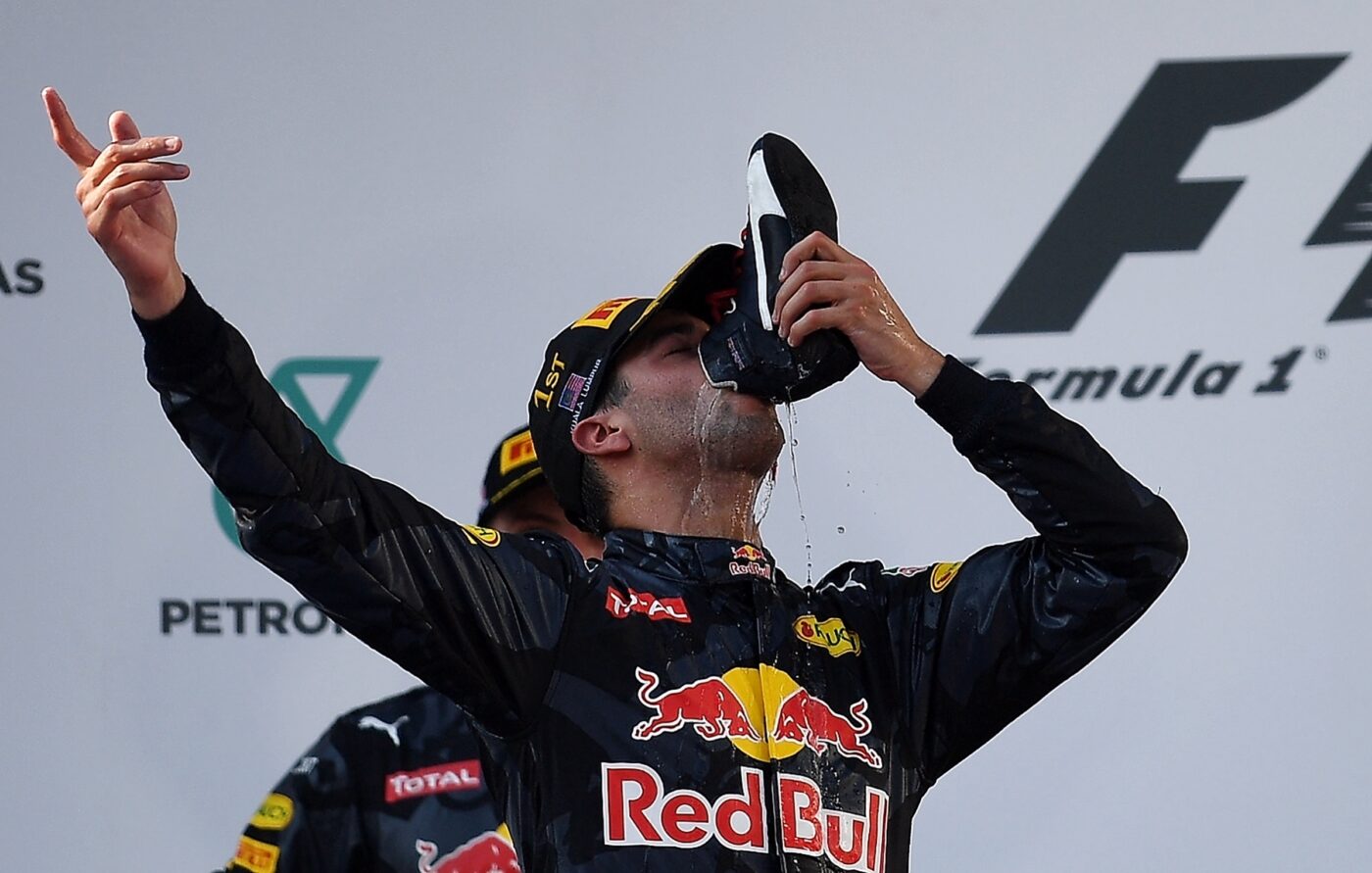
Daniel Ricciardo is the son of former motorsport racing driver Joe Ricciardo who currently races for Scuderia AlpaTauri. He was born in Messina, Italy but relocated to Perth, Australia at the age of seven.
Daniel got into racing early on, mainly because he often watched his dad ride at the Barbagallo Raceway in Wanneroo in Perth. He started karting at the age of nine and quickly found success as a member of the Tiger Kart Club. In 2005, Ricciardo finished 8th in the Western Australia Formula Ford championship. Two years later, he finished sixth in the Formula Renault 2.0 Italia, he was chosen to be a part of the Red Bull Junior Team.
Ricciardo won the British F3 championship in 2009 and just two years later, he made his F1 debut for the HRT Formula One at the 2011 British Grand Prix in Silverstone. The following year, he earned one of the two permanent seats at Toro Rosso, although Ricciardo would have to wait for his first podium in Formula 1 until 2014 when he moved to Red Bull.
That season, Ricciardo finished third in the F1 Drivers Standings behind only Lewis Hamilton and Nico Rosenberg and became just the second Australian to win the Hungarian Grand Prix, after Mark Webber’s victory – also for Red Bull.
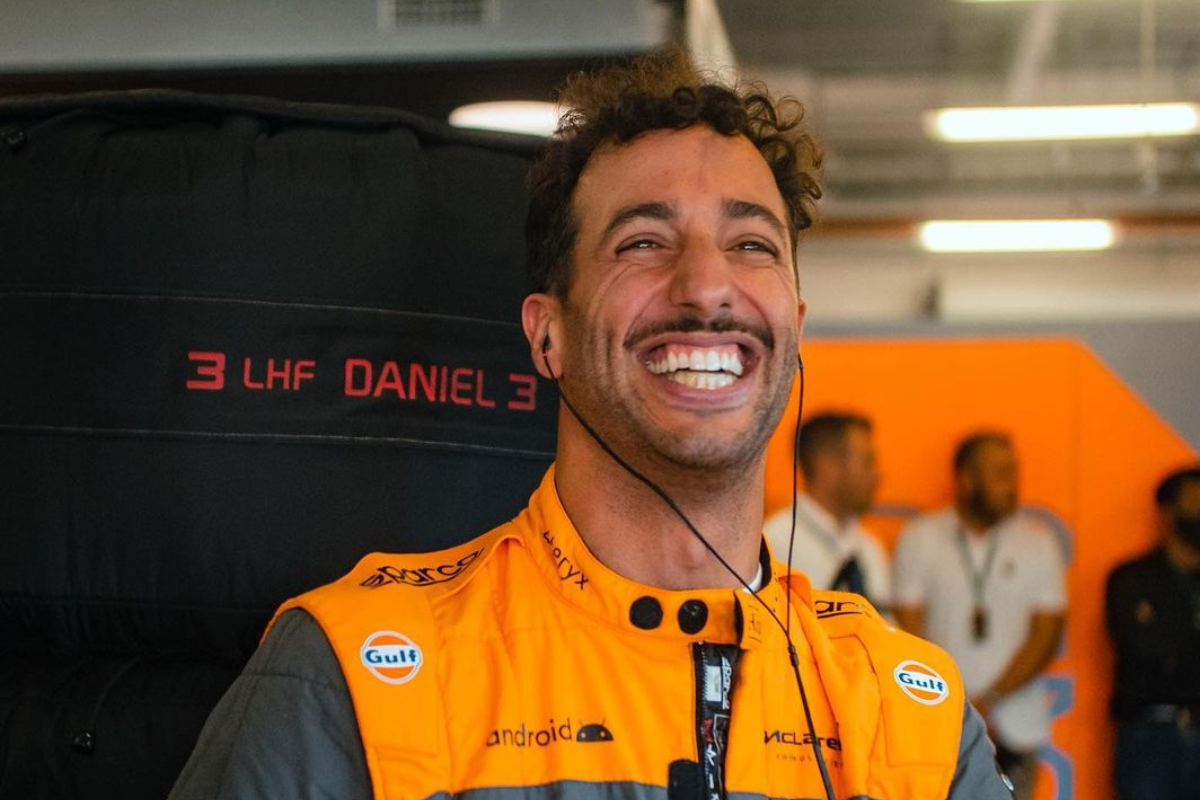
In 2018, Ricciardo announced that he had signed a two-year deal to join Renault. His first season in 2019 was disappointing as he finished just 9th in the Drivers’ Championship.
The Aussie had found a new teammate in Esteban Ocon in 2020 and he bounced back to finish 5th in the competition, before ending his torrid stint with Renault after just two seasons, opting to move to the Papayas of McLaren.
Ricciardo started the season well with his new team, consistently finishing in the points during his first four races as he got to grips with the car. Although for a driver whose ambitions lay further up the grid, Ricciardo was at times outshone by McLaren’s rookie driver Lando Norris who had secured two podium finishes during the same time.
Ricciardo returned to Red Bull in 2023 as the team’s third driver following the termination of his contract with McLaren. With offers from teams across the grid, Ricciardo’s decision to take a break from the sport allowed him to rediscover his passion for racing; something he said he lost whilst with McLaren.
RELATED: Daniel Ricciardo’s Red Bull Redemption Story Is A Formula 1 Fairytale
Returning to the team where he made his name – albeit on loan – Ricciardo replaced the outgoing Nyck de Vries in July 2023 to race for AlphaTauri inhibited once more. His future in F1 has been secured with Red Bull’s sister team, but it’s no secret that the Australian has dreams of racing for his old team once more.
Overall, Ricciardo has won 8 Grand Prix races with 32 podium finishes and is the most successful Australian driver of the modern era.
Mark Webber
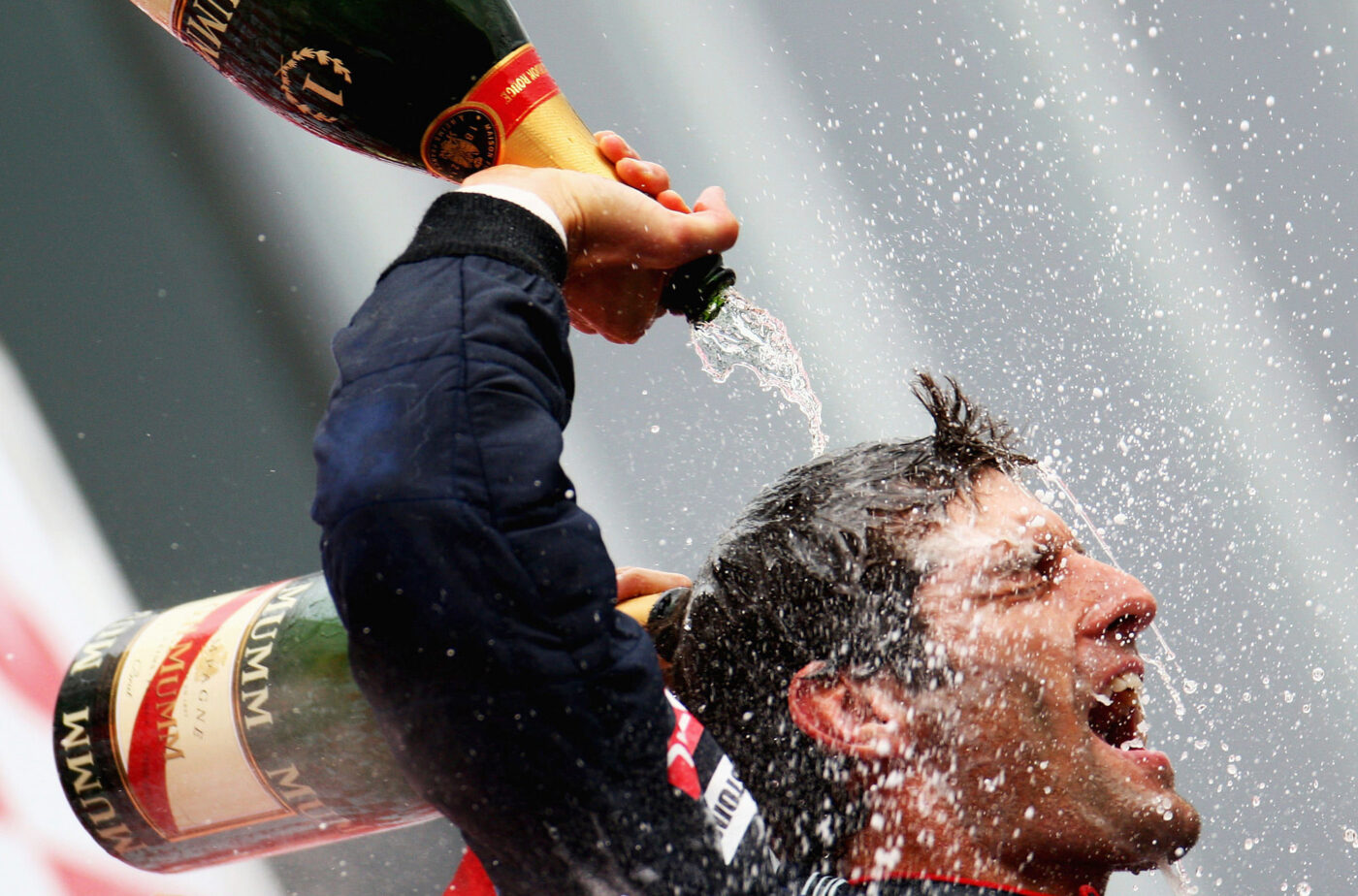
Mark Webber won the 2015 FIA World Endurance Championship and also competed in Formula One from 2002-2013. Born to a motorcycle dealer dad, Mark began driving a motorbike as early as four years old.
At the age of 12, he switched to karting where he won several Australian competitions. Mark then began car racing in 1994 and competed in the Australian Formula Ford Competition where he also found success. But with a dream to race in Formula One, Webber left Australia and moved to the U.K.
He placed second in the 1996 British Formula Ford Championship and third in the 1996 European Formula Ford Championship. After skipping Formula Renault, Webber tried his luck a the British Formula Three, and once again, success followed him there as he won 1997 Rookie of the Year honors. He also finished third in the 2000 Formula 3000 Championship before finally landing a testing debut with the Arrows F1 team in 2001.
The New South Wales native made his F1 debut for Minardi in 2002 and in his first race ever, he finished an impressive 5th in the Melbourne race and picked up his team’s first points in three years. While racing for Williams in 2005, he earned his first podium at the 2005 Monaco Grand Prix, crossing the finish line after Kimi Raikkonen and Nick Heidfeld.
Webber won his first race at the German Grand Prix in 2009 and called it the proudest moment of his career. Overall, Webber won a total of 9 races with 13 pole positions earned and 42 podium finishes. In his final five Drivers Championships competed Webber finished in the Top 6, including four Top 3 finishes in his last four years.
Jack Brabham
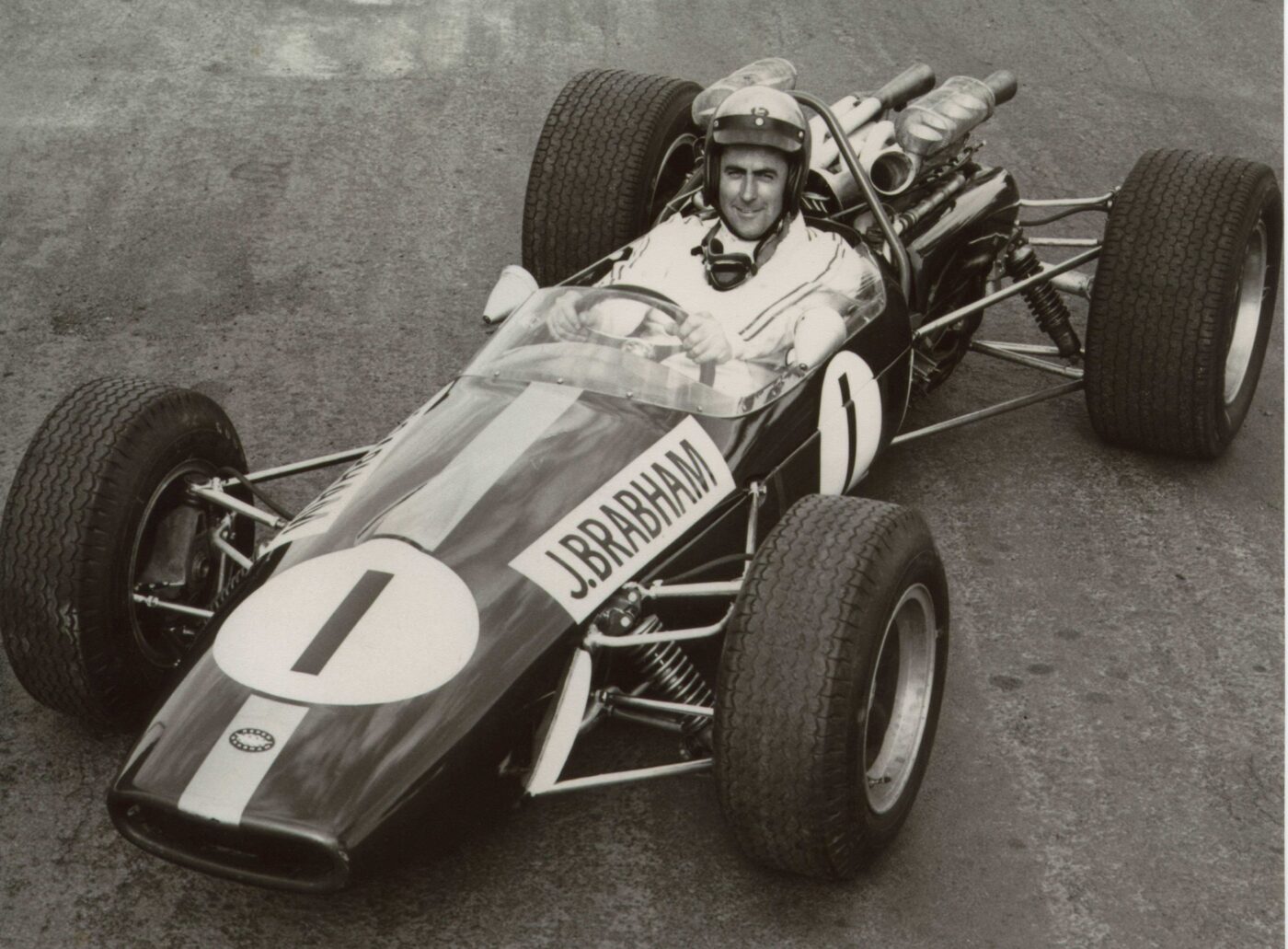
Sir Jack Arthur Brabham is the single most successful Australian driver in Formula 1 history, securing three Formula 1 World Championships in 1959, 1960 and 1966.
Brabham was a flight mechanic for the Royal Australian Air Force before he got into racing. In 1948, he entered midget car racing after he was persuaded by his friend Johnny Schonberg. At first, Brabham only built a car for Schonberg but he ended up taking over from his pal and realized that he loved racing. Soon, his interest would progress to road racing and Brabham would modify Cooper cars and use them in competition.
He headed to Europe in 1955 and made his Formula 1 debut at the 1955 British Grand Prix and won his first championship race in 1959 at the season-opening Monaco Grand Prix.
That year, Brabham also took home his first Formula 1 World Championship and did so in spectacular fashion. With his Cooper Climax race car running out of fuel two corners from the finish line, Brabham remarkably pushed it for a 4th place finish at the U.S. Grand Prix to clinch Australia’s first F1 world championship.
Brabham made it back-to-back F1 world titles in 1960. The Hurstville, New South Wales native then made history in 1966 when he teamed up with Repco to build the BT19. With a car that he called “beautifully balanced”, Jack won four Grand Prix races that season and took a third Formula 1 World Championship, becoming the first man to win a world title using his own car.
In 126 starts, Jack Brabham won a total of 14 races in Formula 1 with 13 pole positions earned and 31 podium finishes. Even during his final F1 season, Brabham still managed to pick up a win at the 1970 South African Grand Prix.
David Brabham
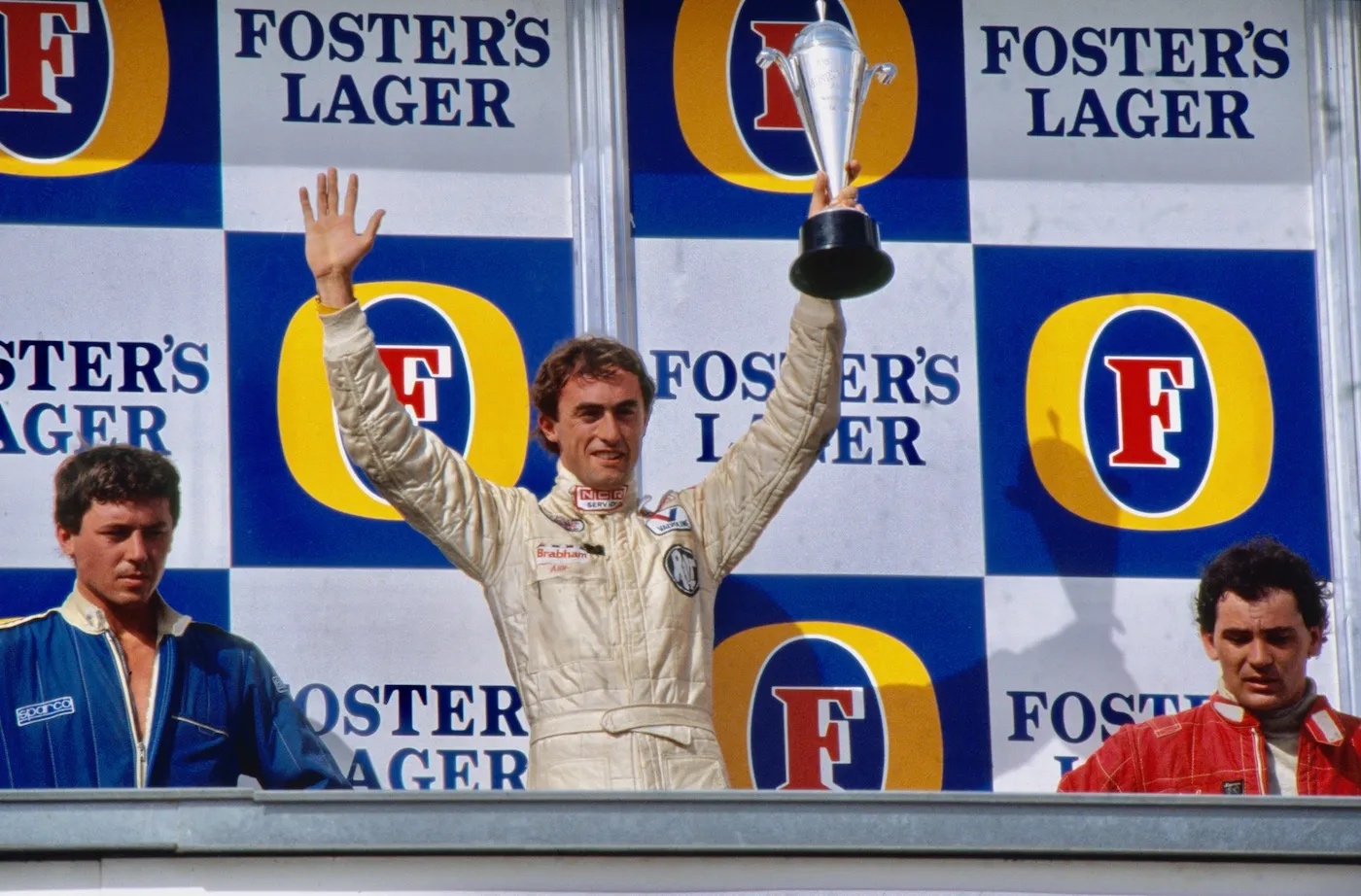
David Brabham is the youngest son of three-time F1 world champion Jack Brabham. But despite his dad’s success and fame in auto racing, young David had no interest in cars and was more keen on learning how to run the family’s farm and play Australian rules football. It wasn’t until he was 17 when he first owned a second-hand kart that he started racing.
He began his professional racing career in 1983 and raced karts for two years before moving to the Ford Laser series in 1985. The following year, Brabham transitioned to Formula Ford 1600 and then the Australian Formula 2 where he won the Drivers Championship in 1987. Brabham also had a test in the New Zealand Formula Atlantic series, American Formula Atlantic series, and South American Formula 3 championship.
A move to Europe saw Brabham join the Bowman team and win the British F3 championship. One year later, he was promoted to Formula 1 although his debut season was a disappointment with seven retirements in 14 races. He lost his seat after the season and didn’t compete in F1 again until 1994 for the small Simtek Team. Brabham finished his F1 career without points in 24 starts.
But while his F1 career was unsuccessful, David Brabham went on to become one of the most successful specialists in sports car racing. He won the American Le Mans in 2009 and 2010. He won a total of 23 American Le Mans Series events across all classes in the series.
He also became the 4th Australian to win the 24 Hours of Le Mans, joining Bernard Rubin, Vern Schuppan, and his older brother Geoff.
Alan Jones
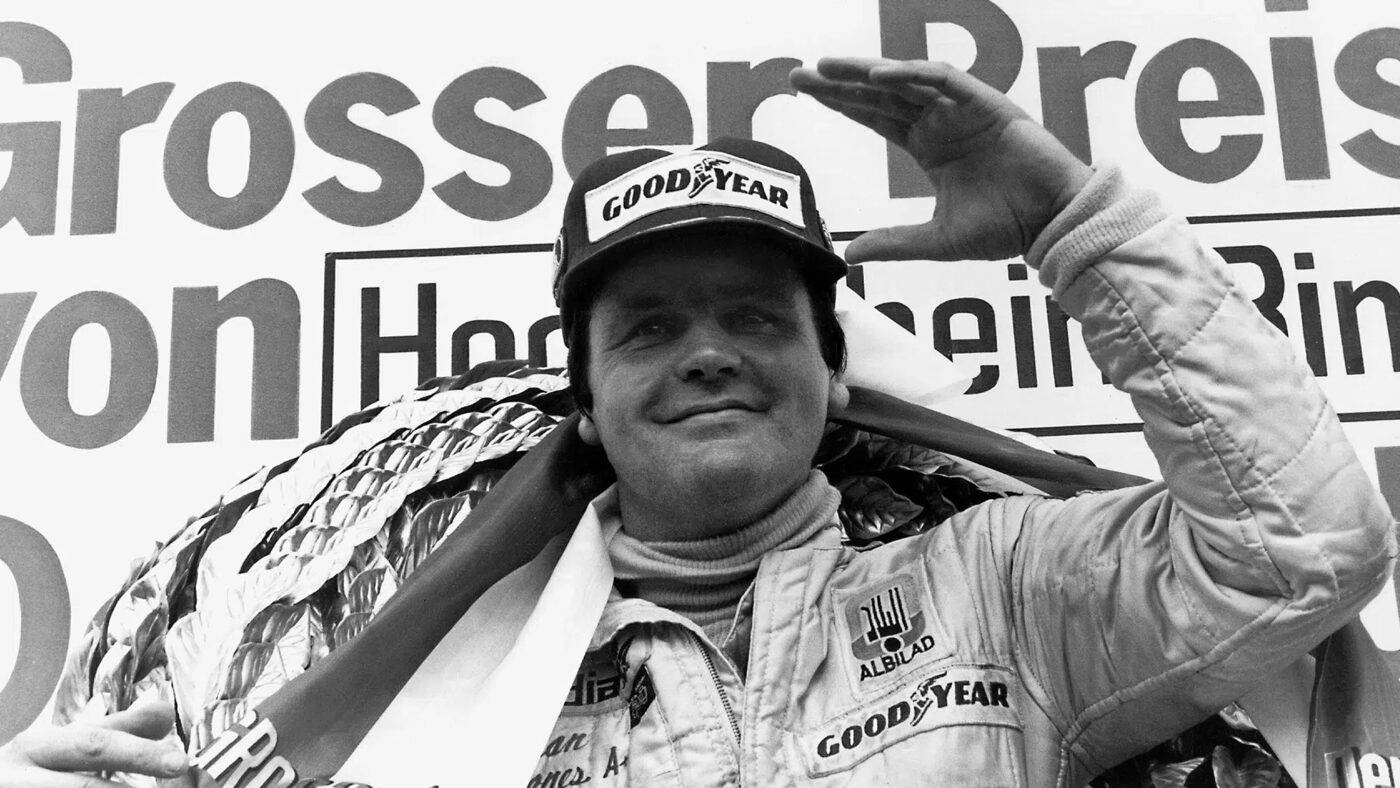
Alan Jones is the last Australian driver to win the Australian Grand Prix, doing so in 1980 when the event was still held at Calder Park Raceway. He is the son of racing driver Stan Jones, who also won the Australian Grand Prix in 1959. They are the third father and son duo to win the Melbourne F1 race along with Graham and Damon Hill and Keke and Nico Rosenberg.
After his racing career, Stan had a Holden car dealership where young Alan first worked. Ever since he was young, Alan wanted to follow in his dad’s footsteps, and in 1967, he set out for Europe to fulfil that dream.
Jones struggled in his early years in England but a break came in 1973 when he won his first race at Silverstone in a sponsored ride in a GRD. But tragedy also struck as his dad died of a heart attack before the race. The saddened Alan, however, went on to finish second in the 1973 British F3 championship.
He had enough success in Formula Atlantic the following year to progress to Formula 1 in 1975, joining the Hesketh team. A fifth-place finish at Nurburgring convinced John Surtees’ team to give him his first full-time F1 gig. In 1978, he joined Williams Grand Prix, and two years later, he became world champion after winning in Argentina, France, Britain, Canada, and the United States.
AJ ended his Formula 1 run in 1982 with 116 starts with 12 wins, 6 poles, and 24 podium finishes. In 2012, Jones revealed that Ferrari contacted him to drive for the team in 1982 after Gilles Villeneuve’s death and the retirement of Didier Pironi. But because he was already enjoying life in Australia at that time, Jones did not respond right away; he’d later describe this as the stupidest thing he’s ever done in his racing career.
Tim Schenken
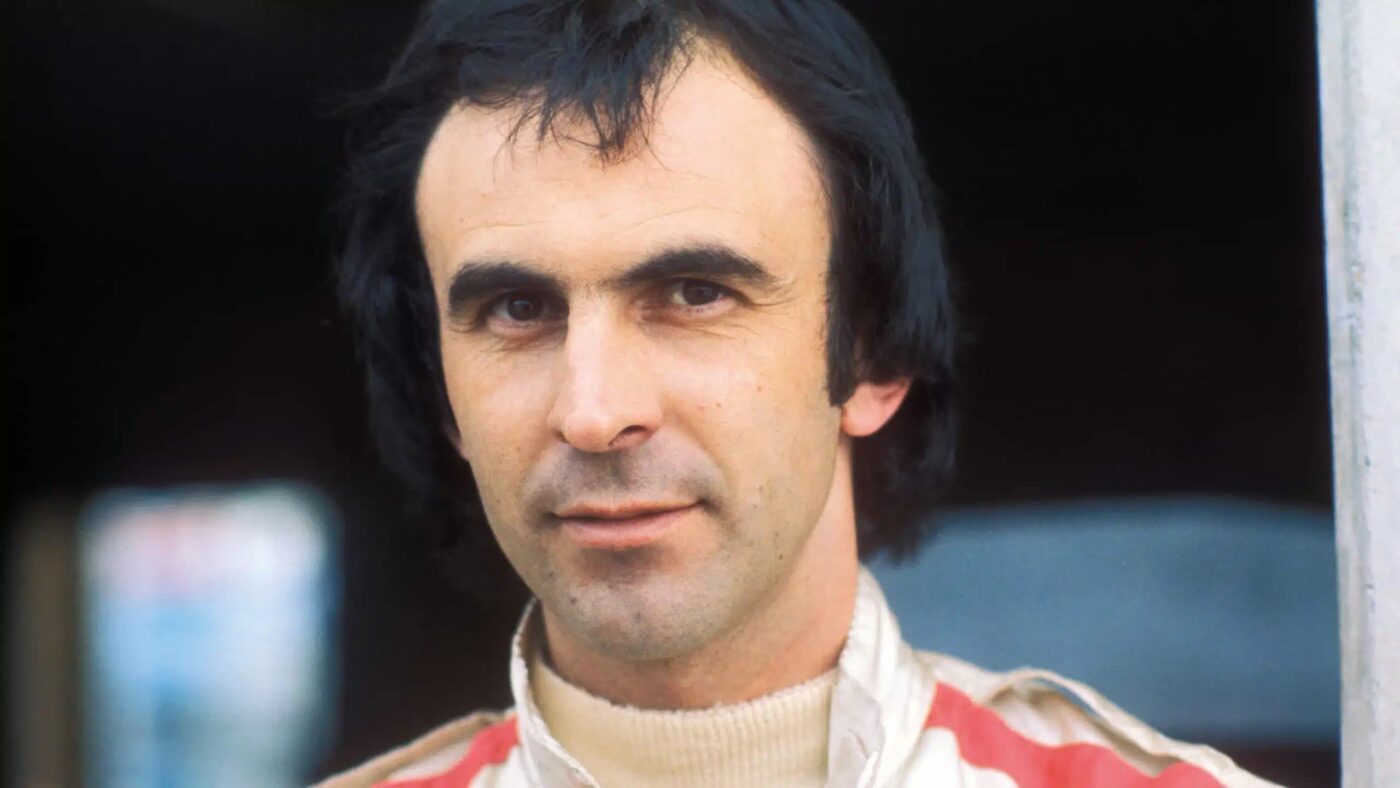
Tim Schenken is one of only six Australian drivers who have stood on a Formula 1 Grand Prix podium. The Sydney native achieved his only Top 3 finish at the 1971 Australian Grand Prix.
Interestingly, his love for racing started when he borrowed his mother’s car without telling her that he was going to use it in a club rally. Despite not having a license to compete, Schenken was able to sneak in and win some trophies which he said he hid in their garage so his mom won’t know. After saving enough money from his winnings, he bought his own car, an Austin A30, and began racing with it.
Schenken took a long boat ride to England to follow the usual Aussie route. He worked as a mechanic at Chequered Flag and he used his earnings to rebuild a Lotus 22 with the intention of racing it in Formula 3 in 1967. But he received a call from Merlyn and after a test drive, he was loaned a new chassis and Chris Steele offered him an engine.
In 1968, Schenken won the British Lombank Formula Three Championship, the British Formula Ford Championship, and the ER Hall Formula Three Trophy. The following year, Schenken took the French Craven A Formula 3 Series in a Brabham BT28. Then in 1971, he finally raced in the F1 Drivers Championship for Motor Racing Developments.
Larry Perkins
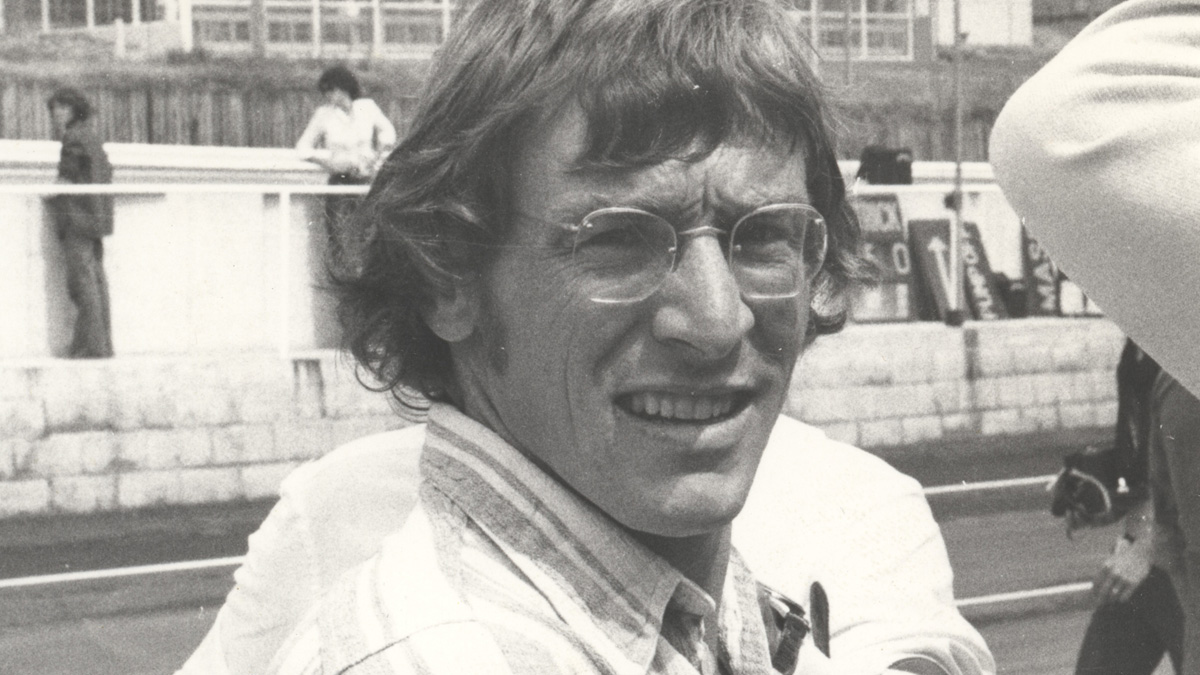
Larry Perkins is the son of the race car driver and 1956 Redex Round Australia Trail Eddie Perkins.
Growing up on the family farm in Cowangie in Victoria’s Mallee region, young Larry developed his love for cars while tinkering with his dad’s machinery.
Although he started as a mechanic, Perkins was destined to race. In 1971, he found success by winning the TAA Formula Ford ‘Driver to Europe’ Series and continued his achievements the following year in 1972 when he captured the Australian F2 Championship. His ambition led him to Europe, where in 1975, he triumphed in the European F3 Cup and secured a commendable 5th-place finish in the British Formula 3 Championship.
Perkins made his F1 debut in 1974 for Chris Amon Racing but did not qualify for the German Grand Prix. Two years later, he returned to the F1 scene for the HB Alarms team. He finished 13th and 8th in his first two races in Spain and Belgium but those turned out to be his best results. He also raced three times for Alfa Romeo that year, Stanley BRM, and Surtees in 1977 before returning to Australia.
He went on to drive Australian touring cars in 1977 and his debut saw him steer a Holden LX Torana to third place in the Formula Pacific New Zealand International Series. In 1979 he captured the Rothmans International Series and the Australian Rallycross Championship. He stayed in the Australian Touring Car Championship for the next 20 years before retiring from driving in 2003 to focus on his engineering business.
Dave Walker
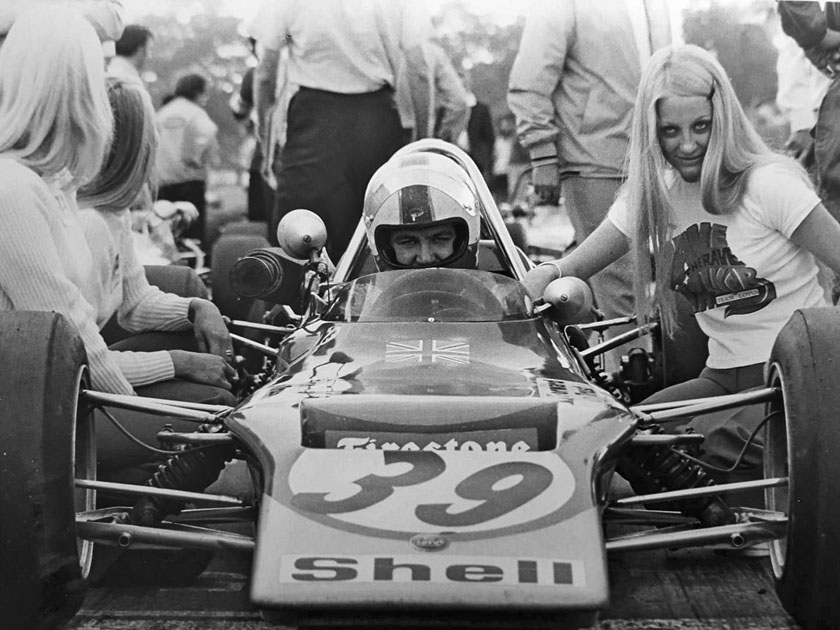
David ‘the Rave’ Walker started racing at a late age. The Sydney native began his professional career as an accountant but took up hill climbing as a weekend pastime before discovering a passion for motor racing. Soon, he moved to the UK in 1962 to try his luck there but when he failed, he returned to Australia to race in the Australian rounds of the 1964-65 Tasman Series.
Walker then returned to England where he raced in Formula 3. He also established his status in Formula Ford 1600 by winning the 1969 Les Leston British Formula Ford 1600 Championship. This victory earned Walker an F3 drive for Lotus and he rewarded them by winning the 1970 British Formula 3 Championship.
His first F1 Grand Prix appearance at the 1971 Dutch GP ended in DQ, but Walker returned the following year and qualified for 10 races, five of which he finished. His best result was P9 at the 1972 Spanish Grand Prix where he was contesting for P5 when he ran out of fuel with three laps to go.
After driving full-time for Lotus in 1972, Walker competed in Formula 2. Unfortunately, two road accidents in London left him badly injured and although he would recover and make several more F2 starts, Walker said that he was no longer the same driver and retired at the end of 1975.
